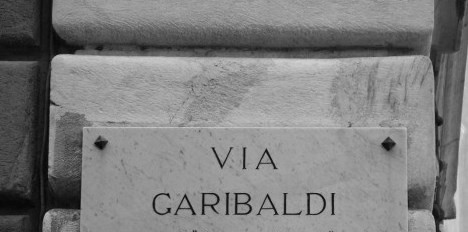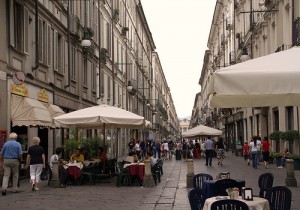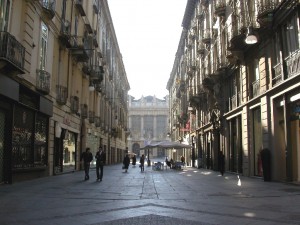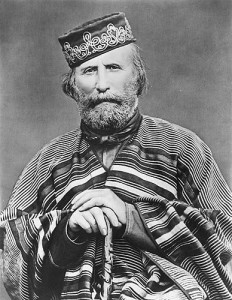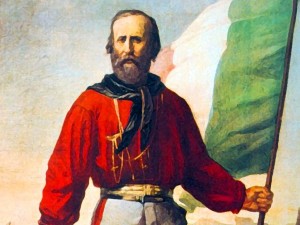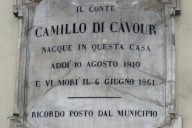Who Walked These Streets
Giuseppe Garibaldi (4 July 1807 – 2 June 1882)
The General
Who Walked These Streets is a series to help locals and visitors to Turin briefly discover the important figures behind the names of the streets. Now, let’s discover via Garibaldi and the person behind the name…
In 1882, Giuseppe Garibaldi, was memorialized when the oldest street in the city of Turin, the Contrada Dora Grossa, was renamed via Garibaldi in his honor. Giuseppe Garibaldi is considered to be one of Italy’s “founding fathers” (along with: Camillo Cavour, Vittorio Emanuele II and Giuseppe Mazzini).
Via Garibaldi is a pedestrian only street that runs from Piazza Castello to Piazza Statuto and is lined with shops, restaurants, bars and street vendors. Along with via Garibaldi being a hub for shopping, eating or simply a place to socialize, visitors to Turin will also want to discover some of the 16th and 17th century religious buildings. You can find them tucked along via Garibaldi: the Church of Santissima Trinità, the Church of San Dalmazzo, the Church of Santi Martiri and the newly renovated Church of the Misericordia.
Although many locals and visitors stroll along via Garibaldi, they may not be aware of the achievements of the man for whom the street was named.
So who was Giuseppe Garibaldi? Garibaldi was born in 1807 in Nice, France to Giovanni Garibaldi and Maria Rosa Raimondo. Although under the control of the French when Garibaldi was born, Nice had long been a possession of the Duchy of Savoy and had a thriving Italian population.
Garibaldi’s family was involved in coastal trade. This influenced him in his early years and led him to living a life on the sea. At the age of 25, Garibaldi became a captain in the merchant marines. He did not follow that profession for long, however, as he set his sights on a very lofty goal – to help Italy throw off the yoke of Austrian rule and see it become a unified country.
After joining the Carbonari , a secret society dedicated to uniting Italy, Garibaldi led troops in an unsuccessful revolt in Piedmont against the French in 1834. Because of his involvement, Garibaldi was sentenced to death by a court in Genoa. He first fled to Marseille before making his way to South America. Garibaldi spent several years in Brazil. During this time, he led forces in the “Ragamuffin War,” an attempt of the Republic of Rio Grande do Sul to secede from Brazil. In which time, Garibaldi met his first wife, revolutionary soldier Ana Ribeiro da Silva (“Anita”) who was known to fight alongside him and also taught him about gaucho culture.
When Garibaldi and his wife moved to Uruguay he put together the volunteer Italian Legion to fight on the side of the Colorados in the Uruguayan Civil War. But, the thoughts of his homeland lingered and Garibaldi couldn’t help but think about its fate.
In 1848, Garibaldi, his wife and a few members of his Italian Legion returned to Italy and took part in the First Italian War of Independence (1848-1849). Garibaldi was in command of the Republican Army that defended Rome against a siege by the French. After a month he and his troops were forced to withdraw and cede the city to the French. His then pregnant wife died when they took refuge in San Marino.
In exile, Garibaldi spent some years as the captain of a merchant ship, working out of the United States, before returning once more to Italy in 1854. He purchased land on the island of Caprera, just off the Sardinian coast, and worked as a farmer until the outbreak of the Second Italian War of Independence in 1859. Under Garibaldi’s leadership, his armies were victorious in several battles resulting in many city states being freed from foreign rule and united under the newly crowned King, Vittorio Emanuele II.
Garibaldi continued to be politically active until shortly before his death, having formed the League of Democracy which attempted to advance the cause of the right to vote for all people and the emancipation of women. He died in his home on the island of Caprera at the age of 74.

